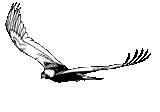
Scottish Raptor Study Group
Monitoring and conserving Scotland's birds of prey
Orkney Raptor Study Group
The Orkney Raptor Study Group formed in 2004. This comparatively late start was far from being due to a lack of raptors in Orkney, more due to the fact that, in an area with a small population, most of those involved with raptor fieldwork were conservation professionals feeding data into their respective organisations.
As a group we monitor all the moorland areas annually apart from Stronsay and Eday, and our coverage for hen harrier and merlin in the county is considered complete. Data for other raptors are gathered on a more causal basis.
Orkney is perhaps best known in terms of its birds of prey for its hen harriers and studies of this species in the islands have resulted in an exceptionally long-term data set. The study was begun by Eddie Balfour in the 1940s, was taken up after Eddie's death by Nick Picozzi of CEH, and continued as far as possible by RSPB staff during the 1980s and 1990s before becoming the subject of a PhD study by Arjun Amar in 1998-2000. Coverage until 2006 was mainly by RSPB staff but with financial support from SNH. Since then monitoring has been carried out by ORSG, still including a substantial input from RSPB staff.
The population fluctuations of this species have been the subject of a number of recently published papers. Monitoring in the past few years has shown that hen harriers have recovered from the decline in the 1990s and the current population is fairly stable with in excess of 80 occupied sites in the past few years.
The other species with a long data run from Orkney is the merlin. Originally covered as a sideline to the hen harrier work, from 1981 onwards all known sites were checked each year. This work resulted in a 1988 Bird Study paper by Eric Meek. The population has been declining slowly for some time but in the past two or three years the decline seems to have accelerated. The 2011 figures show only 9 occupied sites, the long term figures being more in the region of 20 occupied sites. Persecution is not a problem and there seems no shortage of suitable prey so there is no ready explanation for the steady decline being experienced.
The Orkney kestrel population is well known for its ground-nesting habits although only a proportion of the population use such nest-sites, others using sea-cliffs, inland crags and old buildings. The ground nests are notoriously difficult to find, often being hidden in long tunnels in heather or even being below ground level in desiccated cracks in the peat. Full coverage of kestrels is impossible to achieve and this is also the case with our peregrines, some 15-20 pairs nesting chiefly on sea cliffs, some of which on Hoy are over 300 metres high! One observer does usually manage to assess breeding success of peregrines at all Mainland Orkney sites where the cliffs are somewhat more workable. The Orkney population has not experienced the marked up-turn recorded further south possibly due to the problems presented by fulmars around the falcons' nest sites and possibly also due to continuing contamination by, for example, PCBs.
About 10 -15 pairs of sparrowhawks nest, the lack of trees in the islands contributing to a lack of nest sites and, perhaps more importantly, to a lack of small woodland birds for prey. Buzzards were confined to Hoy until 2005.Since then the population has grown with a slowly expanding breeding population established on Mainland.
Marsh harriers bred successfully for a few years from 2001 until 2007 and although birds arrive each spring these have not resulted in any subsequent breeding attempts.
Short-eared owls are especially common, our abundant Orkney voles supporting perhaps up to 50 pairs in a good year (2012 was a particularly good year). It is thought that an increase in the vole population following the two freezing winters of 2009/10 and 2010/11 enabled owls to breed much more successfully than usual. They remain, however, one of the most difficult species to study.
Our honorary raptor species, the raven, is present throughout the islands and annual monitoring is carried out on Mainland at up to over 50 sites.
Anyone with an interest in the raptors of Orkney is encouraged to get in touch with us (please use the Contact Us page).
Chair: Jim Williams
About us•
Argyll•
Central•
Dumfries & Galloway•
Lewis & Harris•
Highland
Lothian & Borders•
North East•
Orkney•
South Strathclyde•
Tayside•
Uists